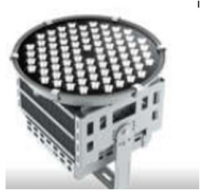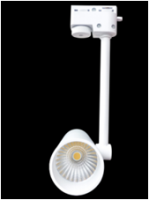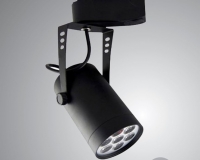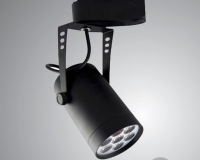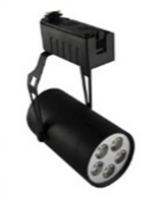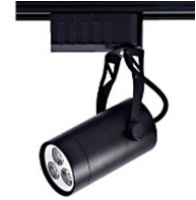The 40th anniversary of National Union in Quang Tri Province
Top News
Mr. Nguyen Quan Chinh, Vice Chairman, People's Committee of Quang Tri Province came to visit the site of LED installation.
THUrsday - 26/02/2015 23:31
- Viewed: 4874
Hints for increasing energy efficiency in workplaces
With the 2020 target of improving energy efficiency by 20%, energy savings are clearly top of mind for consumers and businesses alike. As is a growing desire for impeccable design, efficiency and productivity savings in the workplace. There is a clear demand for energy-efficient solutions, particularly in commercial spaces. In light of this, there are some tips that can help reduce energy costs and bring other benefits too.
Lead the way: swap to energy efficient light sources and save money
When used in the correct setting, LED, compared to incandescent or fluorescent light sources, can provide significant energy-savings in both residential and commercial applications. LED light sources are far more efficient at converting electricity into light, so they save energy and run cooler. They can also be cycled (switched on and off) more frequently without causing the dramatic reduction of lifetime associated with fluorescent lights.
While LED technology has developed rapidly over the last five years. Specifically, LED has evolved to cover the whole light spectrum, producing a warmer light colour that is associated with comfort and increased workplace productivity.
 However, not all LED lamps are the same. It is important to research the specifications provided by the lighting manufacturer, and check if the lamps lifetime figures are proven. A high quality LED light bulb should also have a driver efficiency of above 80%, as outlined in the product description or specifications.
However, not all LED lamps are the same. It is important to research the specifications provided by the lighting manufacturer, and check if the lamps lifetime figures are proven. A high quality LED light bulb should also have a driver efficiency of above 80%, as outlined in the product description or specifications.
One of the main energy-efficiency benefits of LED is that a higher proportion of energy is produced in the form of light rather than heat. Given that 95% of electricity is typically wasted as heat in an old-fashioned light bulb; this is a significant factor in reducing energy usage.
Embrace the dimmer switch: create an ambience and extend the life of lighting investments
Dimmers can significantly extend the lifetime of lighting devices and fittings. In fact, the cost-savings on lamp replacement and maintenance often pays for the dimmer itself. The longer a lamp lasts, whether it is an LED or halogen, the total carbon footprint of the system is therefore reduced over its lifetime. Given all businesses are now accountable for energy expenditure, and are looking to save costs, dimmers are a key consideration to achieve this.
For example, a halogen light source dimmed 35 per cent reduces energy use by 28%. In a commercial building, where lighting accounts for an average of 40% of the total energy, up to 60% of this energy can be saved by effective use of lighting controls.
When selecting a dimmer, it is important to decide the range of dimming that is required, as not all LED and driver systems dim to the same levels. Make sure the requirements are clearly defined, and specify the parts of the system – drivers and dimmers – accordingly. Ensure you know the performance you really need and verify with the manufacturer whether they can meet the criteria for the system as a whole. Dimming to just 1% is achievable with good-quality products, but will be more expensive than dimming to 5% or 10% as a minimum level.
Temperature control: use shading systems to optimise daylight use, and reduce heating/cooling costs whilst improving productivity
Shading not only improves the comfort, privacy and aesthetics of the interior design, but when used effectively it can also increase the R-value of windows – the measure of thermal insulation. With improved insulation from the likes of honeycomb shades comes a reduction in heating costs. Alternatively, specially-coated blackout roller blinds can reflect the sun, which reduces cooling costs.
For commercial buildings, controllable shading systems can optimise natural light use, while eliminating the annoying solar glare on monitors and desks. This not only reduces energy costs associated with artificial lighting, but also improves comfort for employees, which leads to significant productivity benefits.
Don’t get left in the dark: automatic lights and motion sensors save energy and provide peace of mind
Automated systems such as daylight or occupancy sensors and time clocks can turn on lights according to changes in light levels, use of a space, or the time of day. Without any input from the user, this can reduce energy costs and usage. Taking this a step further, the integration of heating, lighting and shading will lead to maximum energy savings.
When looking at occupancy sensors it is important to make sure they are of the highest quality. The best technology is not only highly sensitive, but also can detect the difference between people, small animals, or changes in a room’s temperature, and so can prevent the switching off of lights when people are still in the home or office.
When looking at optimising energy use in the workplace or home, there is a large range of options available. The most important thing is to make sure the implications of a given option are understood and the solutions that best achieve the end goal and energy requirements are chosen.
Lead the way: swap to energy efficient light sources and save money
When used in the correct setting, LED, compared to incandescent or fluorescent light sources, can provide significant energy-savings in both residential and commercial applications. LED light sources are far more efficient at converting electricity into light, so they save energy and run cooler. They can also be cycled (switched on and off) more frequently without causing the dramatic reduction of lifetime associated with fluorescent lights.
While LED technology has developed rapidly over the last five years. Specifically, LED has evolved to cover the whole light spectrum, producing a warmer light colour that is associated with comfort and increased workplace productivity.

One of the main energy-efficiency benefits of LED is that a higher proportion of energy is produced in the form of light rather than heat. Given that 95% of electricity is typically wasted as heat in an old-fashioned light bulb; this is a significant factor in reducing energy usage.
Embrace the dimmer switch: create an ambience and extend the life of lighting investments
Dimmers can significantly extend the lifetime of lighting devices and fittings. In fact, the cost-savings on lamp replacement and maintenance often pays for the dimmer itself. The longer a lamp lasts, whether it is an LED or halogen, the total carbon footprint of the system is therefore reduced over its lifetime. Given all businesses are now accountable for energy expenditure, and are looking to save costs, dimmers are a key consideration to achieve this.
For example, a halogen light source dimmed 35 per cent reduces energy use by 28%. In a commercial building, where lighting accounts for an average of 40% of the total energy, up to 60% of this energy can be saved by effective use of lighting controls.
When selecting a dimmer, it is important to decide the range of dimming that is required, as not all LED and driver systems dim to the same levels. Make sure the requirements are clearly defined, and specify the parts of the system – drivers and dimmers – accordingly. Ensure you know the performance you really need and verify with the manufacturer whether they can meet the criteria for the system as a whole. Dimming to just 1% is achievable with good-quality products, but will be more expensive than dimming to 5% or 10% as a minimum level.
Temperature control: use shading systems to optimise daylight use, and reduce heating/cooling costs whilst improving productivity
Shading not only improves the comfort, privacy and aesthetics of the interior design, but when used effectively it can also increase the R-value of windows – the measure of thermal insulation. With improved insulation from the likes of honeycomb shades comes a reduction in heating costs. Alternatively, specially-coated blackout roller blinds can reflect the sun, which reduces cooling costs.
For commercial buildings, controllable shading systems can optimise natural light use, while eliminating the annoying solar glare on monitors and desks. This not only reduces energy costs associated with artificial lighting, but also improves comfort for employees, which leads to significant productivity benefits.
Don’t get left in the dark: automatic lights and motion sensors save energy and provide peace of mind
Automated systems such as daylight or occupancy sensors and time clocks can turn on lights according to changes in light levels, use of a space, or the time of day. Without any input from the user, this can reduce energy costs and usage. Taking this a step further, the integration of heating, lighting and shading will lead to maximum energy savings.
When looking at occupancy sensors it is important to make sure they are of the highest quality. The best technology is not only highly sensitive, but also can detect the difference between people, small animals, or changes in a room’s temperature, and so can prevent the switching off of lights when people are still in the home or office.
When looking at optimising energy use in the workplace or home, there is a large range of options available. The most important thing is to make sure the implications of a given option are understood and the solutions that best achieve the end goal and energy requirements are chosen.
According to Asia Green Buldings
Source: According to Asia Green Buldings
Newer articles
- Lessons from Denmark: how district heating could improve energy security (06/03/2015)
- Hospital retrofit leads to huge energy savings (03/03/2015)
- United States: North Central College expands investment in energy-saving LED lighting (03/03/2015)
- Energy saving in buildings: Potential still remains (03/03/2015)
- New Zealand’s Businesses Opt for Energy Efficiency (26/02/2015)
Older articles
- E5 bio-fuel encouraged (26/02/2015)
- Seminar on Green Investment Facility in Kim Lan Pottery Village (26/02/2015)
- Smart meter “extras” to boost business energy saving (24/02/2015)
- Four achievements and five solutions for EVN (24/02/2015)
- Solar power in the UK almost doubled in 2014 (08/02/2015)
Devices
Consultancy
Energy Audit
ONLINE
(0909.901.045)
Energy Audit
ONLINE
(0909.901.045)
| MOU SIGNING CEREMONY ABOUT SPECIAL LED WITH COB TECHNOLOGY FOR FISHING SHIPS BETWEEN QUANG TRI PPC AND NEDO |





